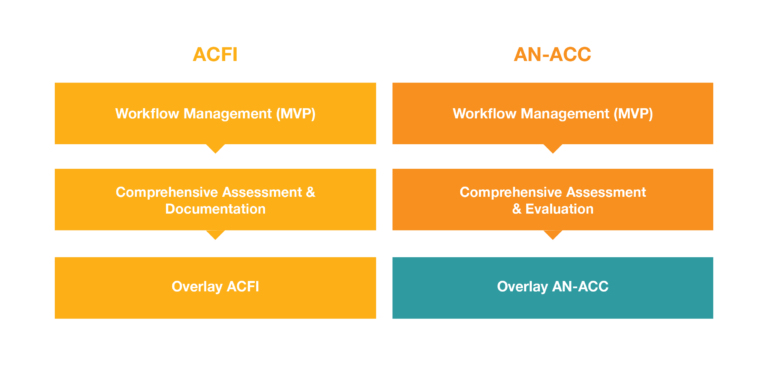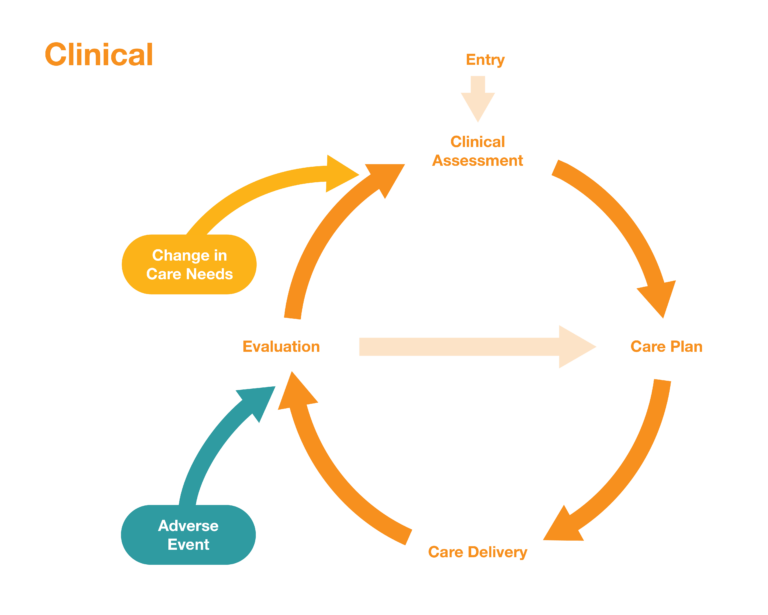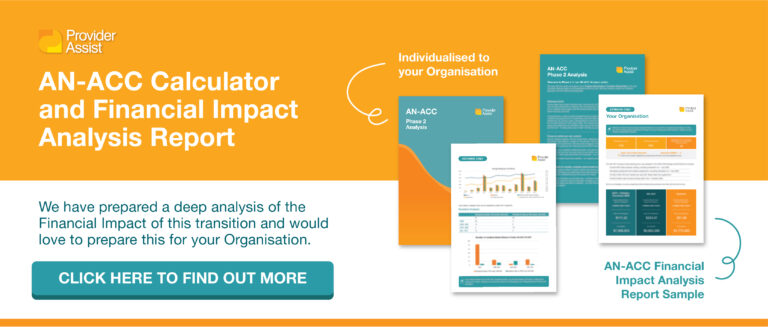Another valuable piece of the puzzle has been released, with many Organisations receiving some of their Shadow Assessment results through My Aged Care.
We’ve been busily analysing the results and here’s what we know so far:
1. Are Facilities better off under AN-ACC?
Many Facilities are, indeed, receiving higher funding under AN-ACC than they were under ACFI. But before we celebrate too much, let’s take a look at what that means.
The AN-ACC rate includes the following:
- Current ACFI basic subsidy funding, including indexation on 1 July 2022.
- Homeless Supplement and Viability Supplement, including indexation on 1 July 2022. These will no longer be paid as separate supplements.
- The $3.2 billion $10 per Resident per day 2021 Basic Daily Fee Supplement.
- The $3.9 billion care funding uplift allocated to cover the cost of the additional care minute requirements under the Aged Care Reforms, from 1 October 2022.
To get a true picture of how much better off you are under AN-ACC you must first:
- Analyse what you will no longer be getting
- Analyse the implementation and ongoing costs associated with your strategy to meet the additional Aged Care Reform requirements
If you need a hand completing this analysis, our Complimentary AN-ACC Financial Impact Analysis Report is a great way to start.
2. Is there a correlation between ACFI and AN-ACC?
Yes and no!
Although there are many components of ACFI that are considered in AN-ACC – ADLs, mobility and cognitive impacts as examples – when looking at the bulk data, there seems to be few reliable patterns. And when you dig a bit deeper, this actually makes a lot of sense!
The huge difference between the ACFI and AN-ACC Assessment process is of course the External Assessment Component: the control of overlaying the funding tool has been reallocated to the external Assessor.

While we no longer have ‘control’ per say, we have the ability to significantly influence it – and this is what we’re seeing in the data.
An AN-ACC Assessor’s role is not to identify care needs – they only have 1 hour with each Resident! Their job is to collate the existing clinical picture into their tools through:
- Review of documentation, care planning, care delivery charts
- Resident interview and observation
- Carer interview and observation
Because they are not relying 100% on the clinical documentation that would support the ACFI claim, we have definitely seen instances where they have uncovered higher care needs than what is on the ACFI claim. What a happy story! But…this is not the norm. Conversely, we have observed instances where Residents with high level care needs or significant cognitive deficits, where funding is below expected classification levels.
It’s not the assessors’ job to identify care needs, it’s to collate the existing picture. So, if you identify it, support it, document it, have the Resident understand it and accept it where possible, deliver it…then you’ll be funded for it. If you leave it up to hope – sometimes you’ll be funded for it, but more often you won’t.”
Mathew Brincat - General Manager, Provider Assist
While relying on hope and luck as a strategy will sometimes pay off, our preference is to take as much control as possible. In order to do this, the following need to be embedded in your Clinical Assessment, documentation and care delivery ecosystem:
- Holistic Comprehensive Assessment of a Resident’s care needs aligned to their goals. By telling the story of the Residents we are putting ourselves in the best position to ensure that the needs, goals and preferences of the Resident are identified, and delivered, and that we are receiving the correct funding to achieve these outcomes.
- Care Acceptance – ensure care understanding and acceptance is part of your process so the Resident and their family understand and can make informed decisions regarding the benefits of the care you are providing. Our video of Marjory’s Story is a great example of what this can look like.
- Thorough Documentation that makes it very easy for the AN-ACC Assessor to collate the true clinical picture
- Carer Education about the AN-ACC process and the importance of proactive care delivery.

3. Reassessment and missed funding:
To us, the key pieces of AN-ACC information that are missing are:
- Can we challenge a classification? How will this work? By reviewing the data we can already see a number of Residents where the AN-ACC classification does not align with provided care delivery, and may benefit from review.
- How long will you wait for Reassessment once triggered. The rules for reassessment have been released, but two things are clear from the information released so far:
- New Admits will be prioritised.
- If the Resident permanently exits care (for example, dies or transfers to a different service) before the new AN-ACC Assessment can be performed, then the Provider’s request will be deemed withdrawn and the Resident’s classification level will remain unchanged.
Which prompts us to be advising all our clients to make sure you get all your entitled funding for your new admits as we believe there will be incredibly limited opportunity for reassessment, particularly in the first 12-18 months while the Department is still ironing out all the kinks of the new system. What we know now is that reclassifications are triggered through hospitalisation, time or significant changes in mobility. This may put us in a position where we are providing care greater than the allocated funding until one of these criterion are met. Getting it right from the start puts us in the best position to be proactive, support outcomes and ensure that we are receiving our entitled funding.
Not got your results yet?
If you haven’t been able to locate them on My Aged Care, simply:
- Log into the My Aged Care Provider Portal.
- From the Home Page, click on the Residential Care tile.
- The screen will show your list of Residents with their Classifications if your results are available
We’ve pulled together a quick guide on how to find and then download your results into a handy Excel Format. Check it out here.
If you’ve had a look and they’re not there – never fear, if you’ve had your visit, The Department says they are releasing them all, so keep an eye out.

Victoria Kelly
Managing Director & Co-Owner




